So you’re driving along quite happily and enjoying your ride. Life is good behind the wheel! Suddenly you hear a tremendous booming sound that literally shakes your whole car. It totally freaks you out. “What was THAT?” That, my dear readers, was a flat tire or a tire blowout. The first thing you do is don't panic .
The next sound you’ll hear is a “whooshing” as the air quickly escapes from the tire, and then you’ll hear a repeated flapping or flopping as the deflated tire hits the road.
The sounds are scary enough. But it’s the sudden pulling to the right or the left that can be even more alarming. Your steering wheel suddenly grew a mind of its own!
Here’s what you do:
That’s right, just stay calm. Avoid panic. Don’t overreact. Drive THROUGH the blowout.
Resist the urge to do something, anything. The worst thing you can do is to give in to the temptation to jerk the steering wheel before the car has slowed down. If it’s a rear tire blowout, turning the wheel at a high speed may cause the car to spin out and roll over. It’d be like trying to drive on an icy road. Flat tires have no traction. None.
Also resist the instinct to slam on your brakes. This could lead to a spinout and rollover also. The sound of a blowout can be scary, but that’s all it is. Just sound. Your car won’t crash unless you panic and do something to make it crash.
More often than not, a flat tire’s probably gonna look like this…
Curses!
…rather than this…
Photo by Bryan Alexander/Flickr
…but if you keep driving on it, it might end up looking like this…
Bye, bye tire.
Many newer cars have automatic tire pressure monitoring systems that will let you know when your tire is underinflated, but according to SaferCar.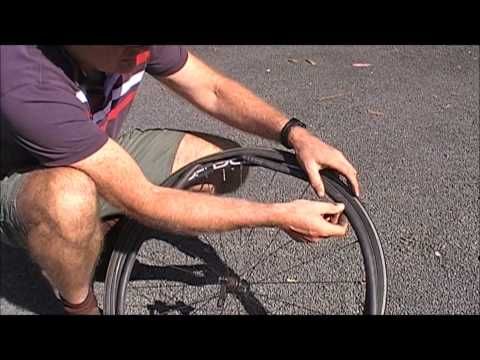 gov , blown tires still cause over 11,000 collisions and 200 fatalities every year. You don’t want to be one of these stats, fam.
gov , blown tires still cause over 11,000 collisions and 200 fatalities every year. You don’t want to be one of these stats, fam.
Once you’re safely stopped on the side of the road and have activated your emergency flashers, you can either call for roadside assistance or get out and change the tire yourself. Be sure it’s safe to get out, and put up your reflective cones or triangles (you do carry them, right?) before you begin.
It’s good to know how to change your own tire because these things always seem to happen when roadside assistance could be busy with rush hour fender-benders or it’s raining and/or it’s dark. Just like sitting in the ER, they’ll take care of the more serious stuff first, and you could be stuck there for hours before they can get to you. (Note: If you’re stuck on the side of a freeway, though, you’ll get top priority ‘cuz no one wants you to be hit at 65mph.)
Whether you change it yourself or get someone else to help you, remember that your spare tire is not for driving long distances or at high speeds.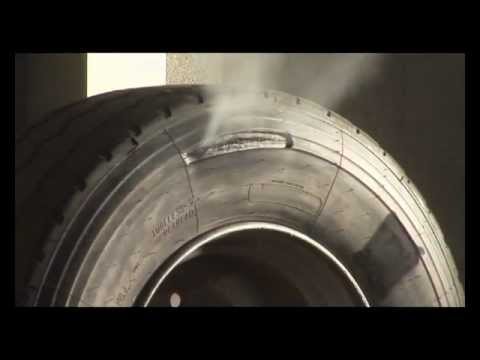 So if you’re in the middle of your summer vacation, get yourself to the nearest tire shop and have your tire replaced with the same regular tire as your other three tires.
So if you’re in the middle of your summer vacation, get yourself to the nearest tire shop and have your tire replaced with the same regular tire as your other three tires.
Another good thing to know is that’s there’s a difference between a tire blowout and a tread separation. This is potentially more dangerous than a blowout because the loose tread will be flapping around and could rip into your passenger compartment like “a giant steel-reinforced Weed Eater.” (Thank Popular Mechanics for this good verbal visual!)
Tire blowouts are caused by:
Be sure to check your tire’s air pressure regularly. Look at your tires for anything that might be lodged in the tread, like a screw or a nail.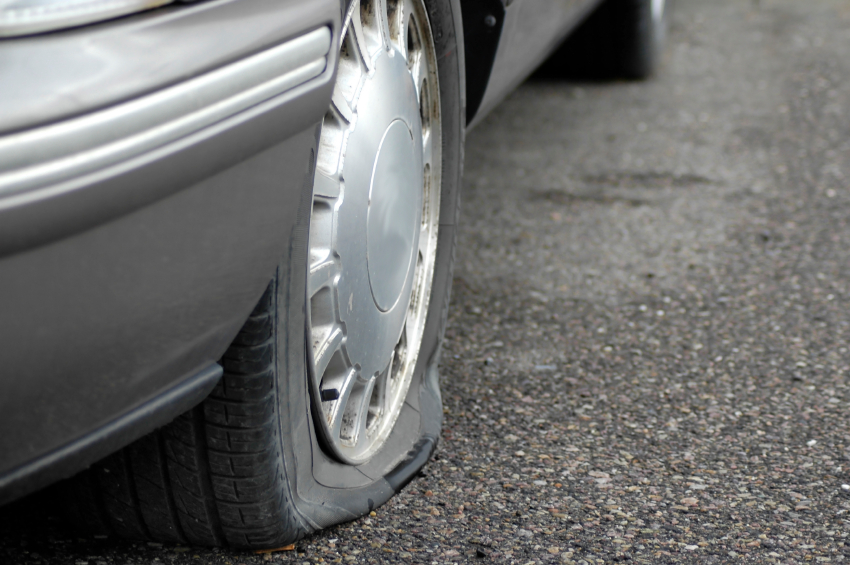 Do this every week, like make it a weekly thing.
Do this every week, like make it a weekly thing.
Staying focused on the road ahead is another good idea. Truck tire treads are scattered everywhere on the freeways these days. Running into or over them can cause you to have a blowout or even an accident.
Blowouts can happen at any time, dear Acelet. Be British: Just stay calm and carry on!
I just had a tire blow out and I want to know what I should do right now so that I don’t cause any damage to my vehicle. Walk me through the first steps I should take–from carefully getting to safety to getting the tire repaired or replaced.
It’s a motorist’s worst nightmare. You’re cruising down the highway when suddenly you hear a loud bang! The next thing you know, there is a loud flapping coming from underneath your car. You have a blown out tire.
If you don’t know what to do in this situation, it could spell disaster for you, your passengers, and other drivers. A report from the National Highway Traffic Safety Administration (NHTSA) shows there were 738 fatalities from tire-related crashes in 2017.
Do you know what to do if you get a blown out tire on the highway? It’s important for every driver to know how to respond to protect their safety and the safety of the other drivers. Here’s what you need to know
Hearing your tire blow can be a shocking and frightening ordeal. The most important thing to remember is to stay calm and not to panic. Your car may jerk to one side or push you toward the side where your tire blew. Do not pull the wheel to one side or the other.
Attempting to overcorrect your steering can cause the car to lose control. Maintain your composure, keep both hands on the wheel, and keep your car moving straight.
Your first instinct when you experience a blown tire may be to slam on the brake pedal. This is exactly what you should NOT do. Trying to brake suddenly during a blowout can cause your wheels to lock up, resulting in loss of control of your vehicle. Your car could fishtail or spin out and hit other vehicles.
Instead of hitting the brakes, the best thing you can do is try your best to maintain your speed. Slowly take your foot off the gas and allow your car to decelerate naturally.
Keep both hands on the wheel at the 10 o’clock and 2 o’clock positions and keep your vehicle straight as you slow down. After your speed drops to a safe level below 30 mph, you can start to apply the brakes slowly.
Once your vehicle has decelerated to a safe speed, you can slowly pull your vehicle over to the side of the road. Make sure you are far enough on the shoulder to provide ample space between you and oncoming traffic so that you and your passengers are safe.
When your car has safely stopped, and you’re out of harm’s way, you can finally take a deep breath. Now that you’re on the side of the road, you should turn on your vehicle’s hazard lights. This signals other drivers that something is wrong and that they should take caution around your car.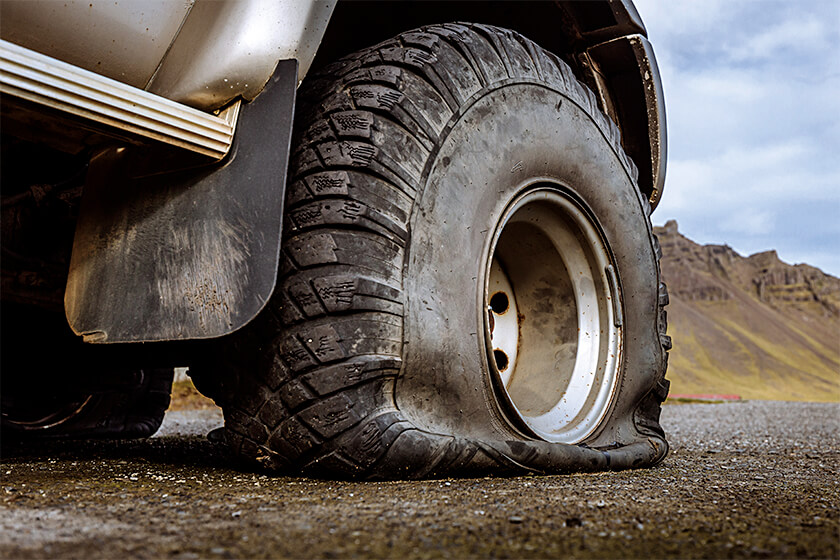
Before you open the door, look carefully for oncoming traffic. When the coast is clear, it’s time to step out and survey the damage.
The next thing you need to do is see how bad the damage is to your tire. If it turns out your tire has low pressure, then you may be able to repair your flat tire. However, if you’ve suffered a blowout, then the damage will be obvious.
A blowout is much more severe than accidentally driving on a flat tire. If your tire has blown, then you may run the risk of having damaged your wheel also. Do not try to drive your vehicle once your tire has blown. Your best option is always to install your spare or wait for help to arrive.
When you remove your blown out tire, it’s going to look like a mess. Rubber will be ripped and torn, and there may be cables or wire sticking out from where the tire failed. Your tire is still attached to your wheel, which you’re going to need when you replace the blown tire.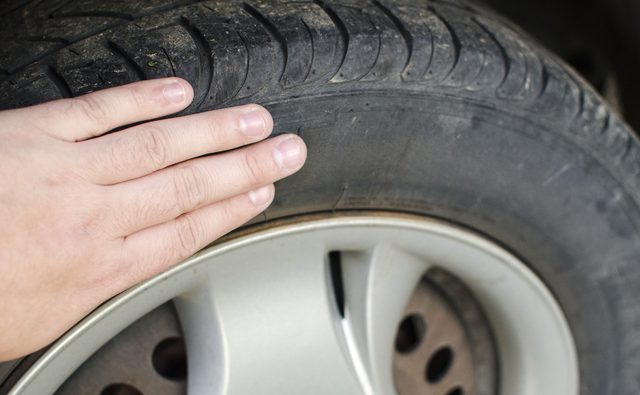
Remove your spare tire from your vehicle. It’s often located in a compartment on the bottom of your trunk or affixed to the back or underside of your car. Then carefully remove the blown tire and store it in the trunk of your vehicle. The next step is installing your spare tire and getting your care to a safer location where you can get a more permanent fix.
If you have a blown out tire on the road, then getting your car to a safe location should be your top priority. Look for a place like a nearby business or parking lot. This will help to get you and your vehicle away from dangerous traffic and give you the opportunity to make repairs.
Don’t panic if you’ve become the victim of a blown out tire. Contact the certified tire experts at Tread Connection for flat tire repair and buy new tires on a schedule that works for you.
Just make sure your vehicle is in a safe and secure location where our van has plenty of room to work.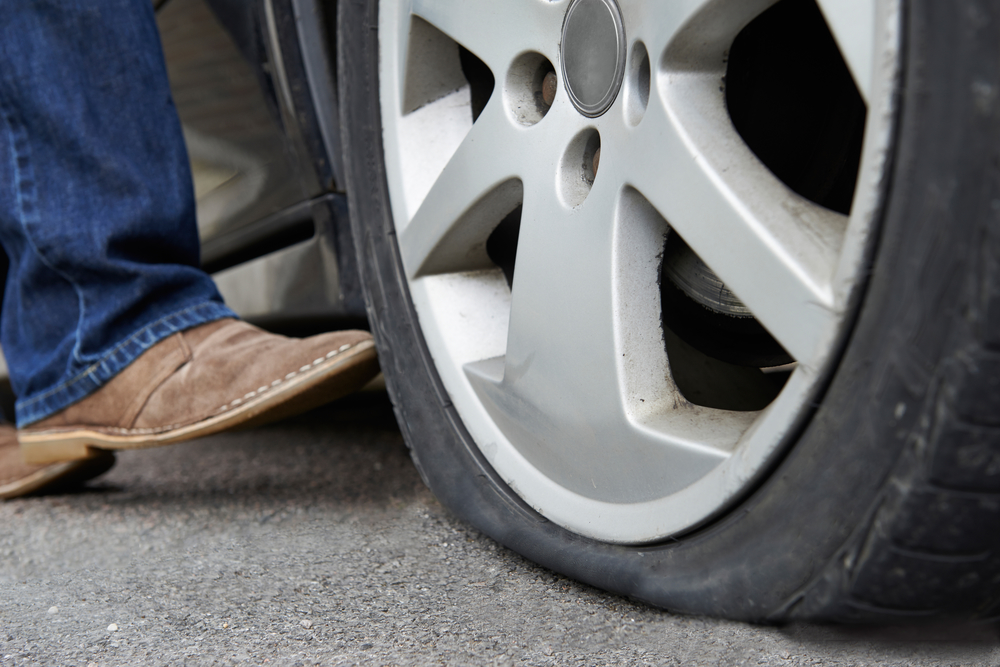 Our certified tire experts will take care of the rest.
Our certified tire experts will take care of the rest.
You can always trust Tread Connection to get you back on the road, on your schedule. Find a Tread Connection van in your area and learn how we can take care of your blown tire today!
BUY TIRES
Another season of changing shoes is approaching. And you may remember that on one of the tires after the last winter/summer there is a jamb - a small bump. I don’t want to run to the store for the sake of one new tire. We understand. Or maybe it looks even better if repaired?
Yes, not every wheel that has met with a nail, rebar sticking out of the ground or a sharp stone on the road is considered damaged. Everything, of course, depends on the scale of the damage and its location on the tire itself. Some are easily repaired, while others are simply impossible to do - the tire can only be sent to the trash.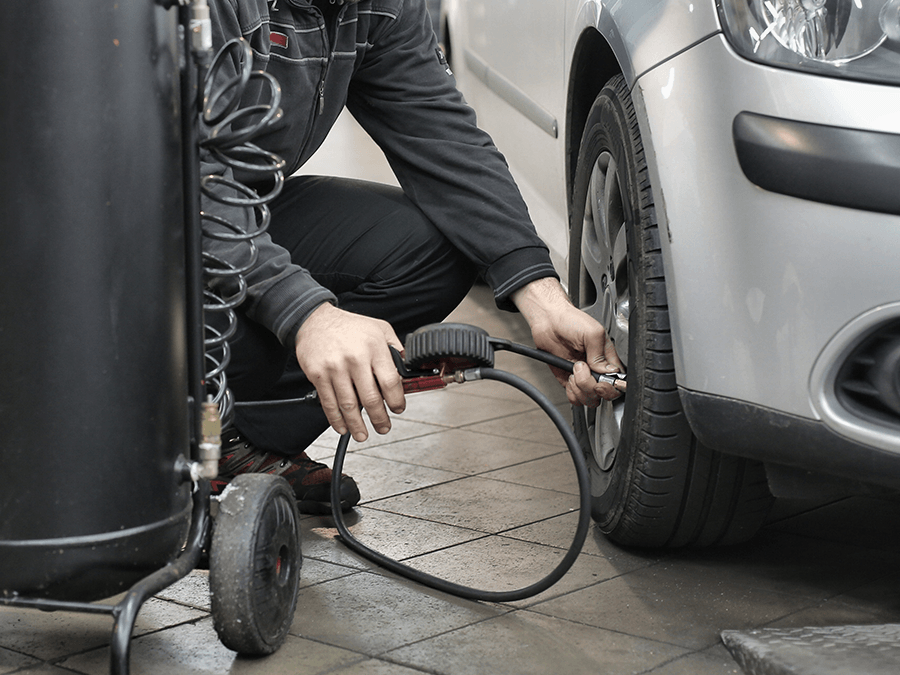
A bulge on a wheel, referred to by drivers as a bump or bulge, is the most common tire sidewall defect. It appears due to a collision with an obstacle or after falling into a pit, more often at high speed. The threads of the sidewall carcass are easily damaged by impact, and the tire at this point can no longer hold the load and air pressure - swelling appears. A small bump sooner or later turns into a big one, and driving with such a defect is dangerous - the wheel can shoot at any moment. At high speed, this is fraught with loss of control, departure from the road and a rollover.
The quality of roads in Kazakhstan contributes to the appearance of bulges on tires
Some types of bulges are repairable, although this is a temporary measure. Not a single patch can restore the factory rigidity. Ideally, change the tire.
Special cord patches can extend the life of a tire with a herniation, even if the swelling has appeared on the tread.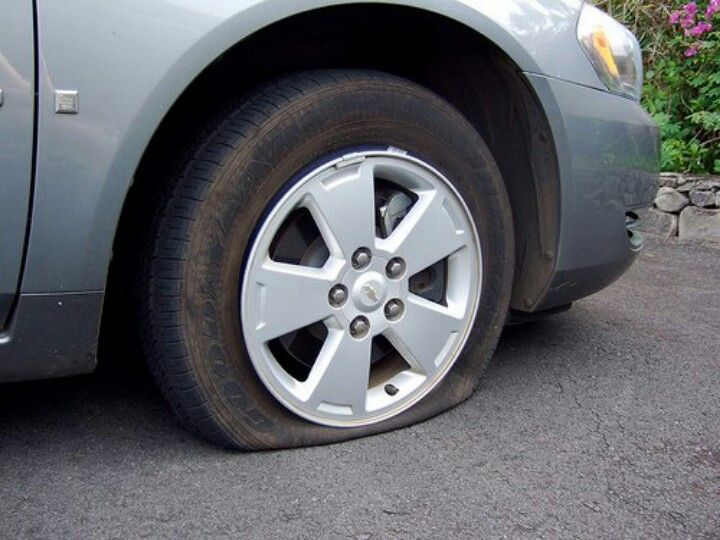 The sidewall is a different story. If the swelling appeared at a distance of more than 40 mm from the side, it can be repaired. If not, then the wheel needs to be replaced. Blisters on low profile tires are most often non-repairable.
The sidewall is a different story. If the swelling appeared at a distance of more than 40 mm from the side, it can be repaired. If not, then the wheel needs to be replaced. Blisters on low profile tires are most often non-repairable.
For maximum safety when riding with a repaired bump, insert the tube. This is an inexpensive and reliable solution. On our market, you can find cameras made in China and Russia, the latter are slightly more expensive, but also of better quality.
The elimination of a side cut is a serious operation, therefore, as in the case of a bump, you will have to go to the professionals. We need cord patches, fortunately in our time they are of different sizes and with a different number of layers. And if you do it wisely, then you can't do without special tools and vulcanization.
A cut, by the way, cannot be healed in all cases. If the gap is in the shoulder area of the tire, it is unlikely that anyone will undertake to repair it, since no guarantees can be given here. However, our Kulibins take on even the most difficult cases, cutting out parts of the sidewalls from the tires and even weaving the cord on their own.
However, our Kulibins take on even the most difficult cases, cutting out parts of the sidewalls from the tires and even weaving the cord on their own.
Tire overhaul. We would not put such a wheel on ourselves
Low profile tires can be repaired, but more difficult. A tear in the sidewall is easier to seal on tires with a medium or high profile.
Sometimes a cut is confused with a pluck. This is when the outer layer of the sidewall caught on something sharp, a tear formed, but the frame itself remained intact. There is nothing wrong with that, although the drivers at the tire fitting company successfully repair the cut, for which they take it accordingly.
If a piece of rubber remains on the sidewall, then glue it with ordinary superglue (101st). If it came off, then it is better to cover it with raw rubber and vulcanize. Leaving the pluck bare is not recommended, because the tire carcass, often consisting of a metal cord, will quickly corrode.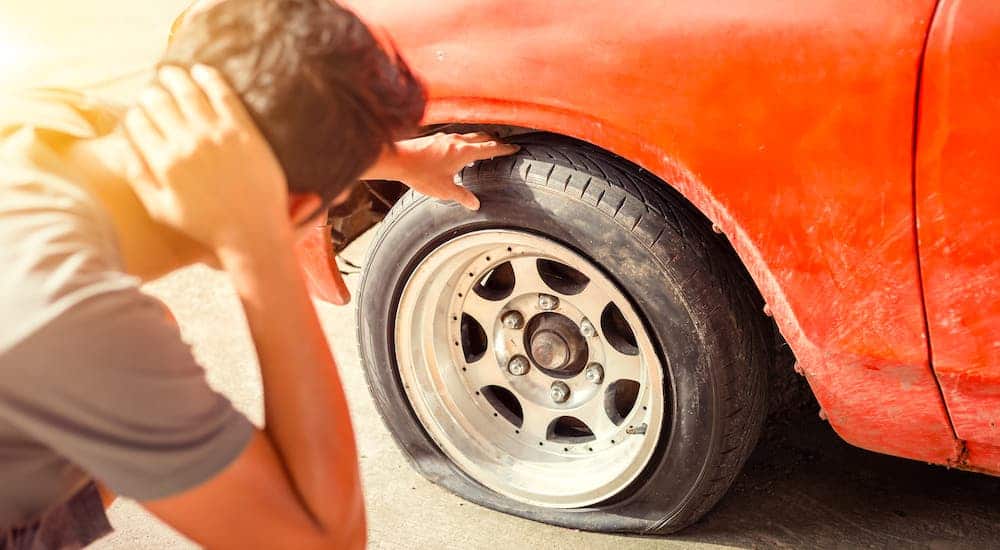
In Europe, defective or used tires are perforated before being sent for scrap to prevent their resale and possible operation. But they don’t know that we have such holes on the sidewall patched once or twice
Cuts and hernias are not the only possible damage to the side of the tire. You can also spoil the side ring, in the process of changing shoes, for example. If it’s for garlic, then such a tire is already dangerous. Sooner or later, the tire pressure and the load in motion will start to squeeze the rubber off the rim - a wheel explosion can occur.
This ailment is repaired if the wire ring - the base - is intact. There are no special technologies and materials to correct this particular problem, but most often craftsmen use a two-component composition for chemical (also called cold) vulcanization. After mixing, the mass is pressed into a fat-free damage. Compound manufacturers recommend waiting 72 hours before mounting a tire. Of course, our masters do not pay attention to this condition - they put the tire right away. And it’s good if the wheel is flat because of this at night in the parking lot, and not on the road.
Of course, our masters do not pay attention to this condition - they put the tire right away. And it’s good if the wheel is flat because of this at night in the parking lot, and not on the road.
If the side ring tears are barely noticeable, but the wheel still deflates, then you can use a special liquid - a bead seal designed to seal a tubeless tire.
These seals have been used in motorsport for some time. In particular, in the American Formula D Drift Series, drivers used compounds to keep the tire on the rim even with minimal tire pressure. Now they are banned.
Pay attention to the left rear wheel of the Nissan Silvia S13. Due to too low pressure, it was literally taken off the disk under load
Every schoolchild has faced this problem when patching the inner tube of his bike after hitting something sharp. Repairing a car tire puncture with your own hands will also not be difficult even on the road. But for this you will need a pump (or compressor) and a universal tire repair kit with harnesses. All this is sold at any car market or gas station.
All this is sold at any car market or gas station.
Repairing a tire on the side of the road with harnesses
The process is simple. If we are talking about the front wheels, then in most cases the wheel can not even be removed, it is enough to turn the steering wheel in the right direction, find the puncture site and carry out repairs. First, the hole is cleaned with a helical awl from the set. The tourniquet itself is smeared with glue and tucked into the eye of the awl, after which it is inserted into the tire hole. With a sharp movement, the tool is removed, and the tourniquet remains in place and clogs the hole. The tails are cut with a knife, but not at the root, it is recommended to leave about 20 mm. The tire is inflated and checked.
Sometimes a nail or self-tapping screw clogs the hole by itself, remaining in it. If you see a hat in a tread, do not rush to pull it out. While the pressure is holding, move to vulcanize. And sometimes they drive with a screw in a tire for weeks.
And sometimes they drive with a screw in a tire for weeks.
Repair of a puncture at a tire shop
Punctures are also repaired with harnesses at a specialized service, although among professionals such repairs are not considered long-term. After a few months, the flagella dry out and can let air through. There are more advanced methods like cold and hot vulcanization. The latter is more reliable. In this case, the hole is sealed with an elastic patch, and the funnel from a foreign object is filled with a special compound. After that, a vulcanizer is put on the tire, it heats up the rubber and solders it.
In addition to the plaster, the puncture is also repaired with special cord fungi. Craftsmen process the puncture site: drill it and treat the surface with a tool to roughen it. Then the repair area is lubricated with glue (it is also called cement) and a fungus is introduced. This is done from the inside of the tire. The cap of the fungus is rolled, and the excess legs are simply cut off from the outside.
Puncture repair with sealant
With the advent of tubeless wheels, and later run flat tires, many automakers began to abandon spare wheels. Instead, repair kits with compressors are supplied with the machines. A repair kit is essentially a bottle of pressurized sealant. Later, such spray cans began to appear on the shelves of ordinary car dealerships.
This method has not taken root in the CIS, because the condition of the roads makes it necessary to have at least a stowaway in the kit, but it can also be considered as a method of repair on the road.
The car must be jacked up and sealant must be pumped into the damaged wheel through the nipple. Next, you should spin the wheel, then pump it up, lower the car and drive a few hundred meters. If the tire tightness has not been restored, repeat the procedure.
For commercial vehicles, cutting the tread with a special device (regrower) is a common thing. Moreover, such tire retreading is provided by the factory (marked REGROOVABLE on the sidewall) to increase the service life. But there are entrepreneurs who undertake to deepen the grooves in tires for passenger cars. But they are not intended for such an operation. Often used tires for sale are “refreshed” in this way. Be careful!
What is the threat?
The worst option is that the retreaded tire will shoot out on the road, as the master can damage the undertread layer when deepening the grooves. Such a tire will not be able to hold pressure at some point. There will be a boom! At best, the tire will indeed last a little longer, but is the game worth the candle? We think it's not worth it.
How is cutting done?
A regrower is used to cut the tread. Roughly speaking, this is a large soldering iron with interchangeable tips of various shapes.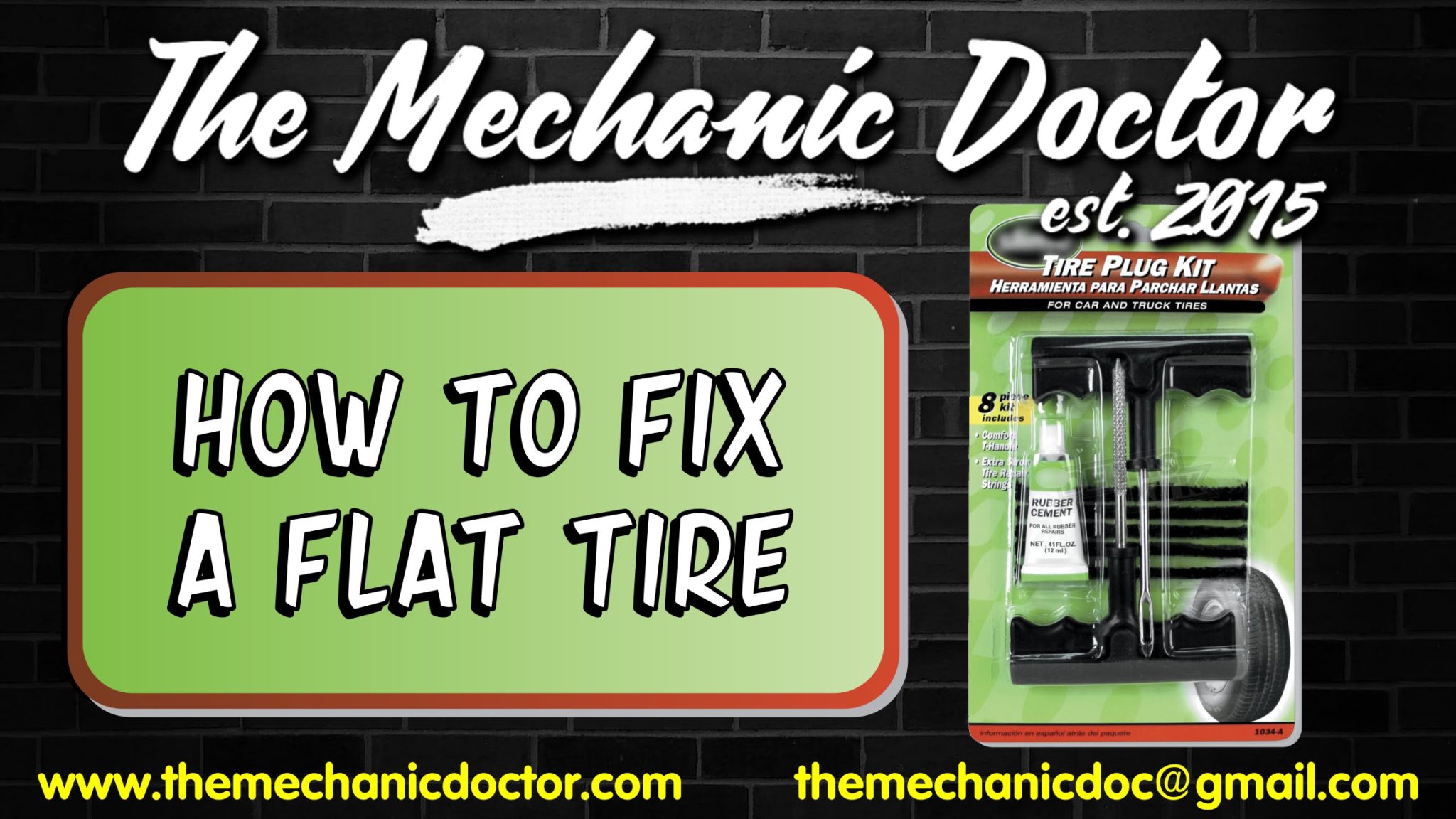 It goes through rubber like a knife through butter.
It goes through rubber like a knife through butter.
If the tire is for passenger cars, then it is worth taking on a regrower only in one case - when part of the tread pattern was welded with "new" rubber during repair. This is where threading comes in handy in order to restore the grooves and symmetry of the tread.
Vehicle operation is prohibited if:
- tires have a residual tread height of less than 1.6 mm;
- tires have punctures, cuts, ruptures that expose the cord, as well as delamination of the carcass, delamination of the tread and sidewall;
- tires in size or load capacity do not match the car model;
- tires of various sizes, designs (radial, diagonal, chamber, tubeless), models, with different tread patterns, winter and summer, studded and non-studded, new and restored, are installed on one axle of the car;
- Tires retreaded according to the second repair class are installed on the front axle.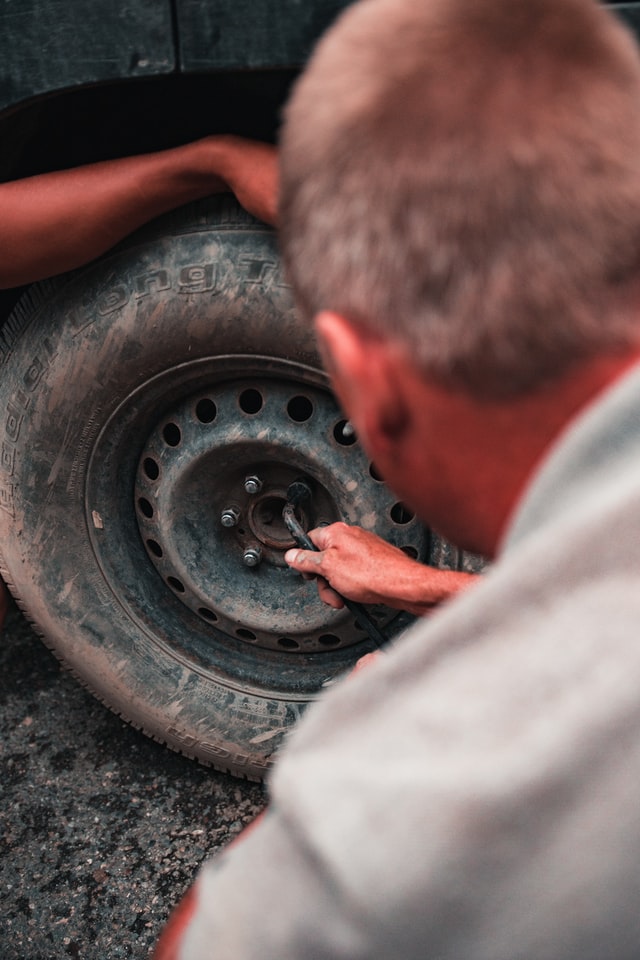
What is a second class repair?
This is the case when the carcass of the tire is restored after serious damage. A side cut (or tear) is a serious damage to the tire carcass.
Updated:
15/07/2021
)
Article content
It is not uncommon to see remnants of car rubber on the roads, most often a truck tire. These are the consequences of a car wheel explosion. An unpleasant phenomenon that can lead to loss of control of the car and the creation of an emergency. A truck tire explosion is especially dangerous for other road users, given the heavy weight and dimensions of the dump truck.
These are the consequences of a car wheel explosion. An unpleasant phenomenon that can lead to loss of control of the car and the creation of an emergency. A truck tire explosion is especially dangerous for other road users, given the heavy weight and dimensions of the dump truck.
An inexperienced driver may be unable to drive at high speeds with a broken tire. Therefore, it is necessary to strive to avoid problems in motion. To do this, it is important to identify and eliminate problems in a timely manner.
In addition, tire failure can occur in motion from hitting bumps in the roadway or a foreign object lying on the road. In this situation, it all depends on the attentiveness of the driver of the car. Speed also affects - the higher it is, the more difficult it is to notice and, moreover, to go around an obstacle. In any case, you need to be aware of the possible problem and understand the solutions.
It is worth noting that what actually occurs is not an explosion in the usual sense of the word, but a sharp loss of pressure.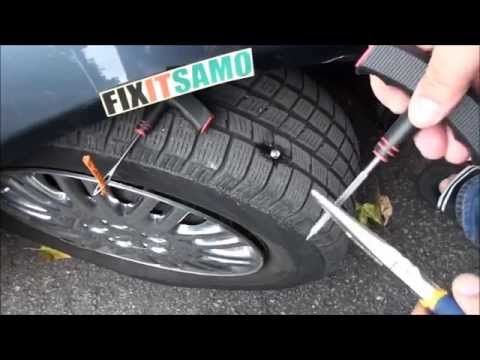 Moreover, this can happen with any type of car tires, including tubeless ones, which have recently been popular with many motorists.
Moreover, this can happen with any type of car tires, including tubeless ones, which have recently been popular with many motorists.
A car tire cannot explode just like that, there must be reasons preceding the explosion. The main ones are:

An under-inflated wheel bursts due to overheating - the contact patch with the road surface increases, heating occurs faster. An over-inflated tire can burst when hit by any sharp object.
There are also other reasons that lead to the fact that tires literally explode on the go. One of them is exceeding the maximum speed limit set by the manufacturer for a particular model or series. The limit is indicated on the sidewall of the wheel and in no case should it be exceeded, as this is fraught with serious problems. Another indicator, the excess of which leads to the fact that the tire may burst - the load index. This is especially true for trucks.
If there is an explosion or you find a puncture in advance, you need to purchase a new tire and put it on the car. In the event of an explosion in the direction of travel, it is necessary to take a set of measures:
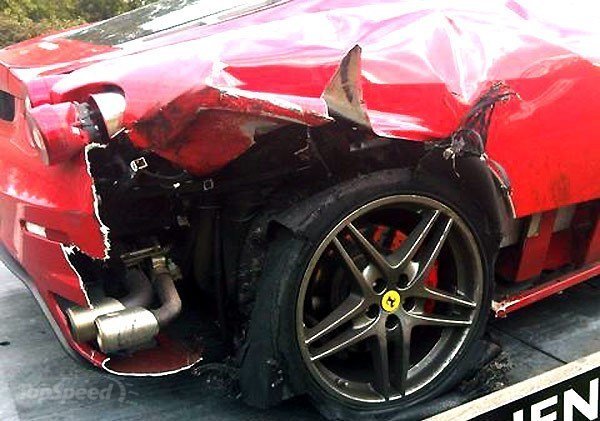
If you don't have a stowage or spare tire, you should try to repair the puncture (provided there was no explosion, but you know about the damage). To do this, you can use a rubber band or sealant.
Summer Drive Protection Sound Comfort
Rating:
4.5
Tires Goodyear Eagle F1 Asymmetric 3 SUV
Summer Drive protection
Rating:
4.5
Tires Goodyear Eagle Sport TZ
Summer Drive protection
Rating:
4.5
Tires Goodyear EfficientGrip 2 SUV
Summer Drive Protection Run On Flat
Rating:
4.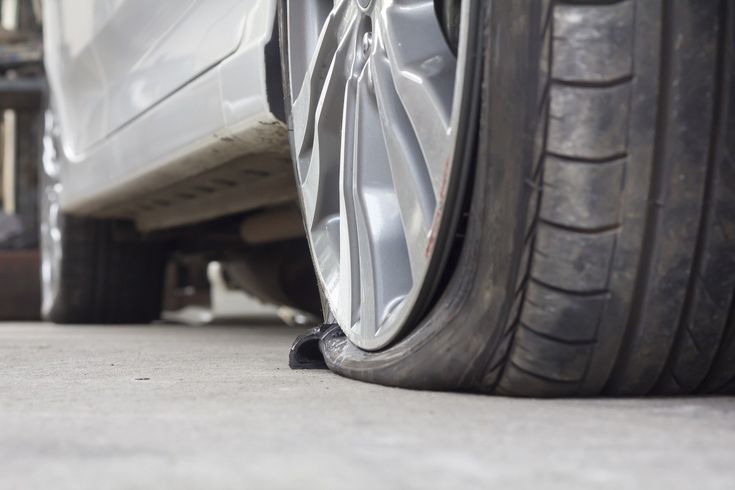 5
5
Tires Goodyear EfficientGrip Performance
Winter Drive protection
Tires Goodyear UltraGrip Arctic 2 SUV
Winter Drive Protection Sound Comfort
Rating:
4.5
Tires Goodyear UltraGrip Ice 2
Winter Drive Protection Sound Comfort
Rating:
4.5
Tires Goodyear UltraGrip Ice SUV
Winter Drive protection
Tires Goodyear UltraGrip Performance+ SUV
All season Drive Protection
Rating:
5
Tires Goodyear Vector 4Seasons Gen-3 SUV
Summer Drive Protection Run On Flat
Rating:
4
Tires Goodyear Wrangler HP All Weather
All season Drive Protection
Rating:
4. 5
5
Tires Goodyear Vector 4Seasons
Summer
Rating:
4.5
Tires Goodyear Wrangler All-Terrain Adventure with Kevlar
Summer Drive Protection
Rating:
4.5
Tires Goodyear EfficientGrip SUV
Summer Drive Protection Run On Flat
Rating:
4
Tires Goodyear Eagle F1 Asymmetric SUV
Cracks in rubber are not new to car owners. Often they are found during the transition from one season of operation to another and a planned replacement of wheels. The main reasons for the appearance:
Often they are found during the transition from one season of operation to another and a planned replacement of wheels. The main reasons for the appearance:
A cracked wheel can be dangerous for further use. At the same time, its size and possible consequences should be assessed. Depending on the nature of the crack, there are:
Depending on the nature of the crack, there are:
In the first case, the wheel may not burst while driving, if the speed limit is not more than 80 km/h. Sharp maneuvers, starts with sharp acceleration, emergency braking are also contraindicated. Do not tempt fate and practice aggressive driving. If these rules are not followed, the tire may not withstand the load and explode.
Deep damage indicates complete failure. It is strictly forbidden to use a product with such cracks, it must be replaced with a new one. Otherwise, there is a risk that the tire will burst on the go. Dirt, water, chemicals used in winter to remove ice on the road can get into the crack. All this will speed up the process of its destruction.
Regardless of the size and depth of the crack, damaged tires will have to be replaced with new ones. Long-term operation is not allowed. Moreover, under the influence of external factors (water, temperature differences, dust and dirt), cracks will only increase, and the wheel will collapse.
Long-term operation is not allowed. Moreover, under the influence of external factors (water, temperature differences, dust and dirt), cracks will only increase, and the wheel will collapse.
A hernia is no less of a problem than a fissure. This is a swollen bump on the lateral surface (external or internal). The phenomenon is also very dangerous and can lead to an explosion. Although you can often see cars with wheels that show a hernia.

A hernia can be repaired but should not be done. Sooner or later she will appear again. It is best to change the tire and not save on your own safety. Theoretically, you can put a patch, while you will not restore the rigidity, you will break the weight and balance. It is better to buy new wheels, having analyzed the causes of the hernia, in order to prevent this in the future.
In order to avoid bursting a tire on a car, a set of measures must be taken. First of all, it is recommended:
